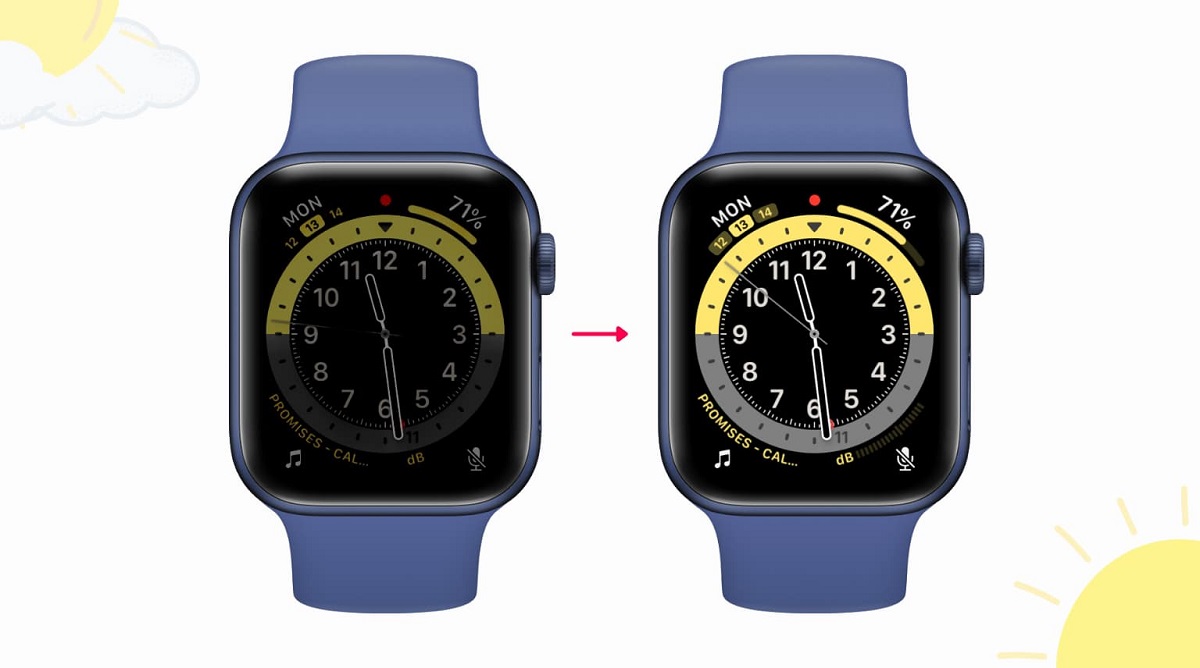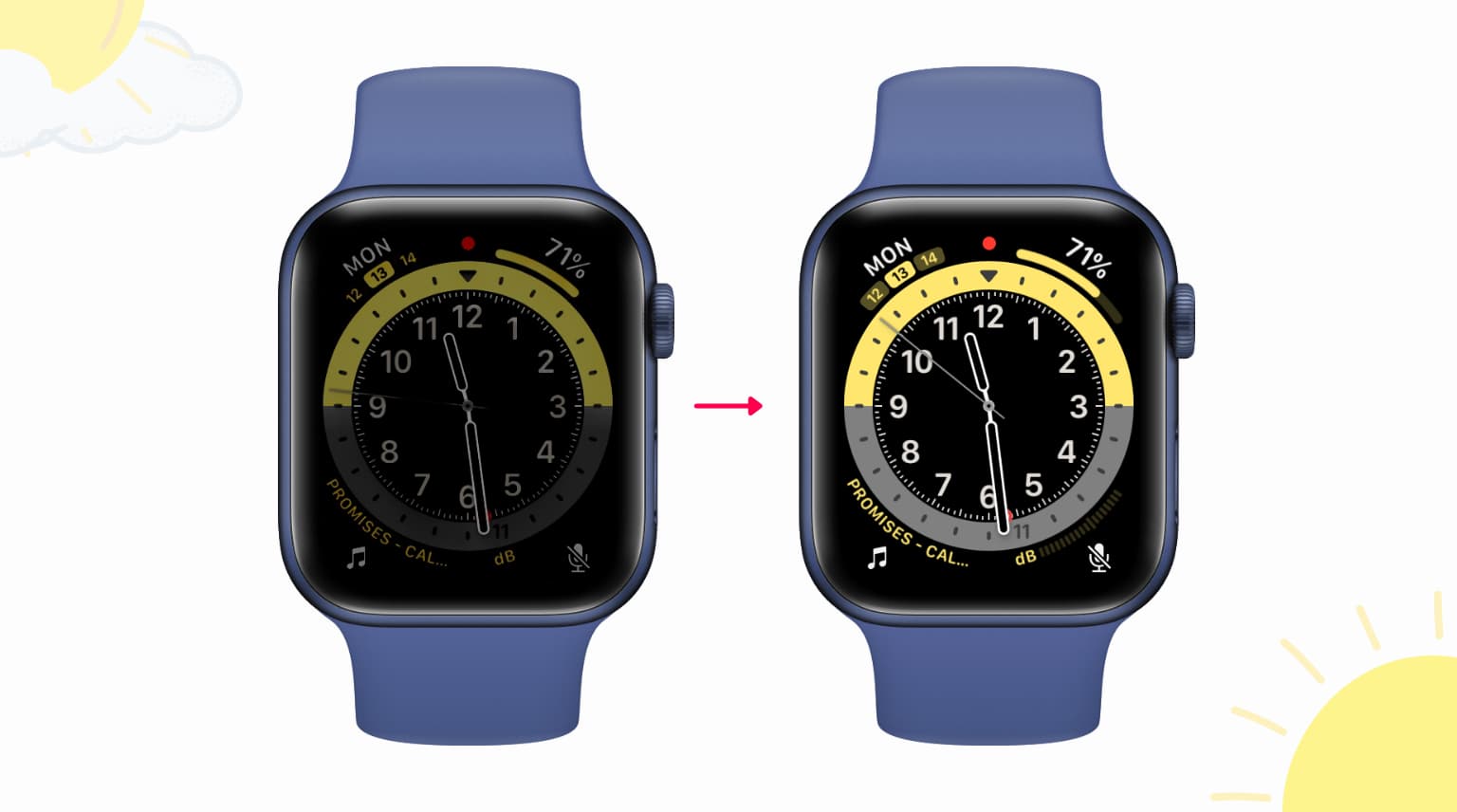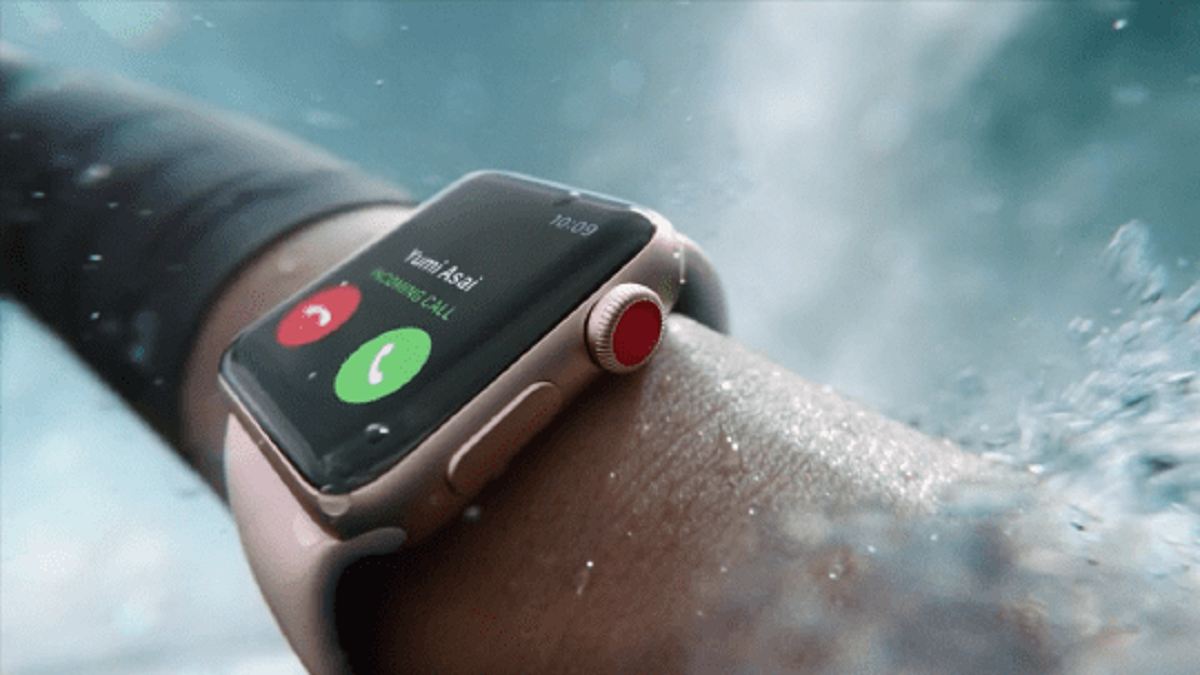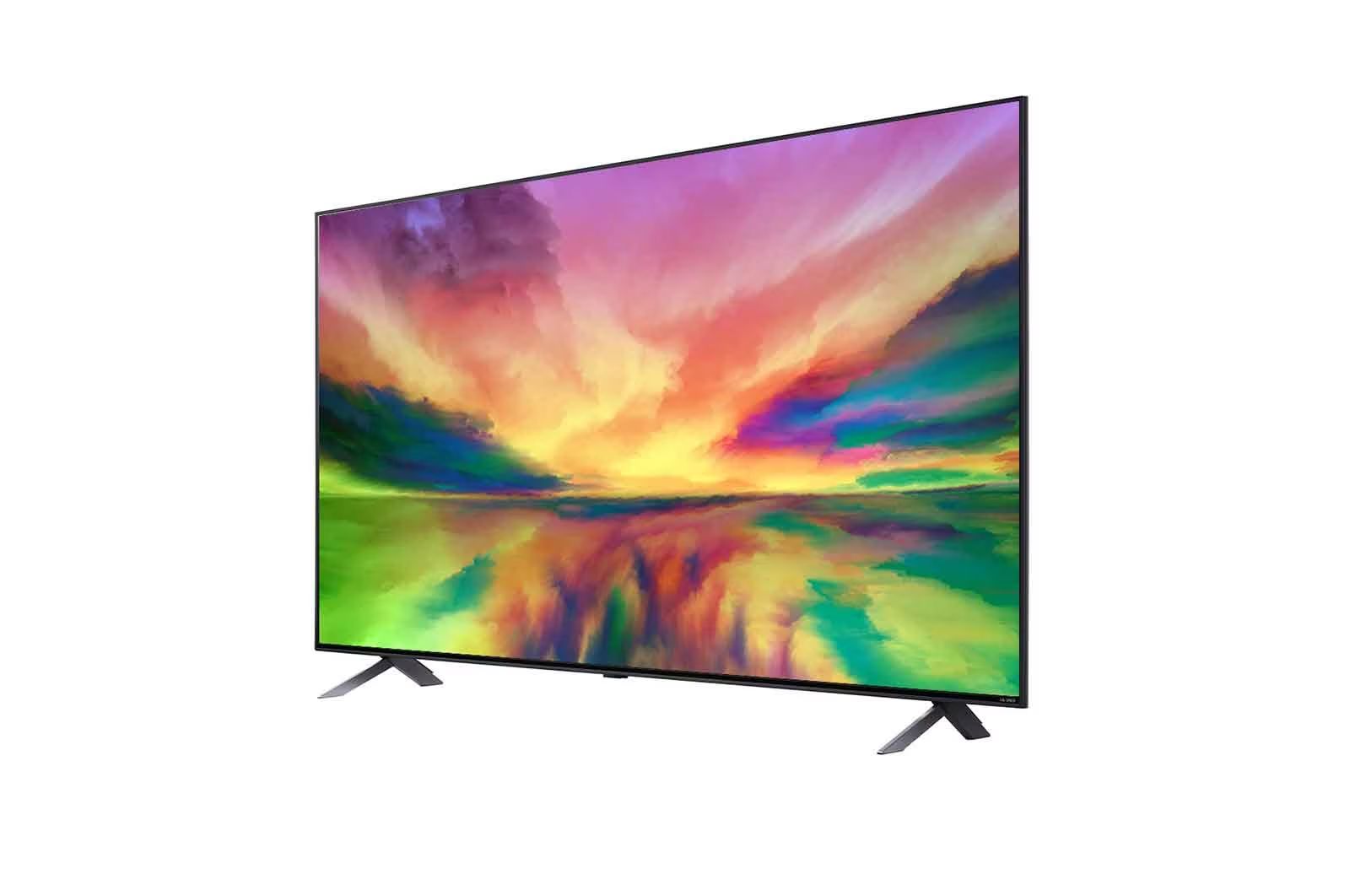Introduction
Have you ever noticed that your Apple Watch display appears dim or less bright than usual? If so, you’re not alone. Many Apple Watch users have experienced this issue, and it can be quite frustrating. The dim screen makes it difficult to read notifications, view apps, and use the watch in general.
There are several reasons why your Apple Watch might be dim, ranging from simple settings adjustments to more complex hardware or software issues. In this article, we will explore the possible causes of a dim Apple Watch and provide you with troubleshooting steps to help you resolve the problem.
Before we delve into the reasons behind a dim Apple Watch, it’s crucial to double-check if the issue is indeed the display brightness. Sometimes, the watch face itself or certain apps may have a dark or subdued color scheme, which can give the impression of a dim screen. So, be sure to swipe left or right on the watch face to check different faces and see if the issue persists.
If you’ve confirmed that your Apple Watch is indeed experiencing dimness, continue reading to find out the potential causes and solutions.
Reasons for a Dim Apple Watch
There are several possible reasons why your Apple Watch may appear dim. Understanding these reasons can help you identify the specific cause and find an appropriate solution. Here are some common factors that can contribute to a dim Apple Watch:
- Low Brightness Setting: One of the most straightforward explanations for a dim Apple Watch is a low brightness setting. It’s possible that the brightness level has been inadvertently lowered, making the display appear dimmer than usual. To adjust the brightness, swipe up on the watch face to access the Control Center, and adjust the brightness slider accordingly.
- Battery Saver Mode: Another reason for a dim Apple Watch could be that it is in Battery Saver Mode. This mode automatically reduces the screen brightness to conserve battery life. To check if Battery Saver Mode is enabled, swipe up on the watch face to access the Control Center and look for the battery percentage. If it’s low, the watch may have entered Battery Saver Mode. You can disable this mode by charging the watch or by going to the Settings app and disabling the Battery Saver Mode option.
- Display Sensitivity Settings: Apple Watches have a feature called “Wrist Raise” that adjusts the display brightness based on your wrist’s position. If the Wrist Raise sensitivity is set too low, the watch may not brighten up appropriately when you raise your arm. To check and adjust this setting, open the Settings app on your Apple Watch, go to Display & Brightness, and make sure the Wrist Raise setting is appropriately configured.
- Ambient Light Sensor Issues: The Apple Watch’s display brightness is also influenced by the ambient light sensor, which automatically adjusts the brightness based on the surrounding lighting conditions. If the ambient light sensor is malfunctioning or covered by dirt or debris, it may affect the watch’s brightness. Try cleaning the sensor and ensuring there are no obstructions blocking it.
- Software Glitches or Updates: Sometimes, a dim Apple Watch can be attributed to software glitches or bugs. If you recently updated your watch’s software or installed a new app, it’s possible that these changes are causing the dimness. In such cases, restarting the watch or updating to the latest software version can help resolve the issue.
- Hardware Issues: Finally, hardware problems can also lead to a dim Apple Watch. Damaged display components or faulty connections may result in reduced brightness. If you suspect a hardware issue, it’s advisable to contact Apple Support or visit an authorized service center for further assistance.
Now that we’ve explored the various reasons for a dim Apple Watch, it’s time to move on to troubleshooting steps to help you resolve this frustrating issue.
Low Brightness Setting
One of the most common causes of a dim Apple Watch display is a low brightness setting. It’s possible that the brightness level has been inadvertently lowered, making the screen appear less bright than usual. To adjust the brightness setting and potentially resolve the dimness, follow these steps:
- On your Apple Watch, swipe up from the bottom of the watch face to access the Control Center.
- Look for the brightness slider, which resembles a sun icon, and adjust it by dragging your finger up or down.
- Observe the changes in the screen brightness as you slide the control. Adjust it to a level that is comfortable for you.
If the slider was already set to a low position, increasing the brightness should immediately make the display appear brighter and resolve the dimness issue. However, if the brightness is already at the highest setting and the watch remains dim, there may be other factors causing the problem.
It’s worth checking the brightness settings periodically, especially if you share the Apple Watch with someone else, as they may have inadvertently adjusted the brightness level without your knowledge. Keeping the brightness at an appropriate level can help ensure optimal visibility and improve your overall Apple Watch experience.
If adjusting the brightness setting didn’t resolve the dimness problem on your Apple Watch, continue reading for more troubleshooting steps to explore other potential causes.
Battery Saver Mode
Another possible reason for a dim Apple Watch display is the activation of Battery Saver Mode. When your watch’s battery is running low, it automatically enters Battery Saver Mode to conserve power. This mode reduces various functions, including screen brightness, to extend the remaining battery life. To check if your Apple Watch is in Battery Saver Mode and potentially resolve the dimness, follow these steps:
- Swipe up on the watch face to access the Control Center.
- Look for the battery percentage indicator. If it appears low, your watch may be in Battery Saver Mode.
- To disable Battery Saver Mode, you can try either of the following:
- Charge your Apple Watch: Connect your watch to its charger and allow it to charge until the battery percentage increases. Once the battery is sufficiently charged, Battery Saver Mode should automatically turn off.
- Disable Battery Saver Mode in settings: Open the Settings app on your Apple Watch, scroll down to Battery, and toggle off the Battery Saver Mode option.
After either charging your watch or disabling Battery Saver Mode, the screen brightness should return to normal, and the dimness issue should be resolved. However, if the dimness persists even after taking these steps, there may be other factors contributing to the problem.
It’s important to note that Battery Saver Mode is a useful feature to conserve battery life, especially when your watch is running low on power. However, disabling it when not needed can help maintain optimal screen brightness and improve your overall Apple Watch experience.
If the dimness persists after adjusting the brightness setting and disabling Battery Saver Mode, continue reading for additional troubleshooting steps to identify other potential causes.
Display Sensitivity Settings
The display sensitivity settings on your Apple Watch can also affect its brightness. The watch utilizes a feature called “Wrist Raise” that automatically adjusts the display brightness based on the position of your wrist. If the display sensitivity is set too low, the screen may not brighten up properly when you raise your arm. To check and adjust the display sensitivity settings, follow these steps:
- On your Apple Watch, open the Settings app.
- Scroll down and select “Display & Brightness”.
- Look for the “Wrist Raise” setting and tap on it to adjust the sensitivity.
- You can increase the sensitivity level by moving the slider to the right. This will ensure that the watch’s screen brightens up more effectively when you raise your wrist.
Once you’ve adjusted the display sensitivity settings, test to see if the screen appears brighter when you raise your arm. If the dimness issue was due to a low sensitivity setting, this adjustment should resolve it. However, if the screen remains dim, there may be other factors contributing to the problem.
It’s important to find the right balance for the display sensitivity settings. If the sensitivity is set too high, the screen may brighten up unnecessarily in certain situations and impact battery life. Conversely, if the sensitivity is set too low, the dimness issue may persist. Experiment with different sensitivity levels to find the setting that works best for you and ensures optimal brightness when you need it.
If adjusting the display sensitivity settings didn’t resolve the dimness problem, continue reading for more troubleshooting steps to uncover other potential causes.
Ambient Light Sensor Issues
The ambient light sensor plays a crucial role in adjusting the brightness of your Apple Watch’s display based on the surrounding lighting conditions. If there are any issues with the ambient light sensor, it may affect the brightness level and result in a dim screen. Here are some steps you can take to troubleshoot ambient light sensor issues:
- Inspect the sensor: Start by examining the ambient light sensor located near the screen of your Apple Watch. Make sure it’s clean and free from any dirt, smudges, or debris that may be obstructing its functionality.
- Clean the sensor: Gently wipe the sensor using a soft, non-abrasive cloth. This will help remove any fingerprints, grime, or other particles that may be interfering with the sensor’s ability to accurately detect ambient light.
- Adjust the lighting conditions: Move to an area with different lighting conditions and observe if the screen brightness appropriately adjusts. For example, if you’re in a dimly lit room, the screen should automatically become brighter, while in well-lit surroundings, it should dim slightly.
- Restart your Apple Watch: Sometimes, a simple restart can resolve minor software glitches affecting the ambient light sensor. Hold down the side button on your Apple Watch until the Power Off slider appears. Slide it to power off the watch, then press and hold the side button again to turn it back on.
After performing these steps, check if the dimness issue persists on your Apple Watch. If the screen brightness still appears dim or fails to adjust properly based on lighting conditions, there may be other factors contributing to the problem.
If you suspect that the ambient light sensor is faulty or that there’s a hardware issue affecting its functionality, it’s best to contact Apple Support or visit an authorized service center for further assistance and professional evaluation of your Apple Watch.
Now that we’ve explored the potential issues with the ambient light sensor, let’s move on to the next section to discuss how software glitches or updates can also contribute to a dim Apple Watch display.
Software Glitches or Updates
Software glitches or updates can sometimes cause a dim Apple Watch display. Changes in the operating system or newly installed apps can affect the screen brightness settings and lead to a dim screen. To address software-related dimness issues, follow these troubleshooting steps:
- Restart your Apple Watch: A simple restart can often resolve minor software glitches. Press and hold the side button on your Apple Watch until the Power Off slider appears. Slide it to power off the watch, then press and hold the side button again to turn it back on.
- Update your Apple Watch software: Check if there are any available updates for your Apple Watch by opening the Watch app on your paired iPhone. Go to General > Software Update, and if an update is available, follow the on-screen prompts to install it. Software updates often include bug fixes that can address display issues, including dimness problems.
- Reset all settings: If the dimness issue persists after restarting and updating the software, you can try resetting all settings on your Apple Watch. This will revert all settings to their default values but will not erase any of your data or media. To do this, open the Settings app on your Apple Watch, go to General, and select Reset. Then choose “Reset All Settings” and follow the on-screen instructions.
- Uninstall recently installed apps: If the dimness issue started after installing a specific app, it’s worth considering uninstalling that app. To do this, press and hold the app’s icon on your Apple Watch’s home screen until the icons start jiggling. Then tap the “X” button on the app you want to uninstall and confirm the deletion.
By following these steps, you can address software-related dimness issues on your Apple Watch. Restarting, updating the software, resetting settings, or uninstalling problematic apps can often resolve display issues caused by software issues or conflicts.
If the dimness problem persists even after trying these troubleshooting steps, it’s possible that there may be hardware-related factors contributing to the issue. In the next section, we will explore potential hardware issues and how to further troubleshoot them.
Hardware Issues
If your Apple Watch display continues to appear dim even after trying software-related troubleshooting steps, it’s possible that there may be hardware issues contributing to the problem. Hardware problems could involve damaged display components, faulty connections, or other internal malfunctions. Here are some steps to troubleshoot potential hardware issues:
- Check for physical damage: Inspect your Apple Watch for any visible signs of physical damage to the screen or other components. Look for cracks, scratches, or any other abnormalities that could affect the display’s performance.
- Ensure proper connections: Sometimes, loose or faulty connections can result in dimness issues. Make sure that your Apple Watch is securely attached to its strap or band, and check if the display connectors are clean and properly connected. Detach and reattach the strap to ensure proper alignment and connection.
- Contact Apple Support or visit an authorized service center: If you’ve tried all the troubleshooting steps and the dimness issue persists, it’s best to reach out to Apple Support or visit an authorized service center. They will have the expertise and resources to diagnose and address potential hardware issues with your Apple Watch.
It’s important to note that attempting to fix hardware issues on your own, especially if you’re not experienced in repairing electronics, can potentially cause further damage. Therefore, contacting Apple Support or a professional service center is the best course of action when dealing with hardware-related problems.
If your Apple Watch is still under warranty, Apple may offer repair or replacement services if the dimness is found to be a result of a hardware defect. However, if your device is no longer covered by warranty, there may be associated repair costs.
By seeking professional assistance and getting a proper diagnosis from Apple Support or an authorized service center, you can ensure that your Apple Watch receives the necessary repairs if the dimness issue is indeed caused by hardware problems.
In the next section, we will provide some general troubleshooting steps that you can follow to try and resolve the dimness issue on your Apple Watch.
How to Troubleshoot a Dim Apple Watch
If you’re experiencing a dimness issue with your Apple Watch display, here are some general troubleshooting steps to help you identify and resolve the problem:
- Check the brightness setting: Swipe up from the bottom of the watch face to access the Control Center and adjust the brightness slider to increase the screen brightness.
- Disable Battery Saver Mode: If your watch is in Battery Saver Mode, charge it or disable Battery Saver Mode by going to the Settings app and toggling off the option.
- Adjust display sensitivity settings: Open the Settings app, go to Display & Brightness, and adjust the Wrist Raise sensitivity setting to ensure the screen brightens up properly when you raise your arm.
- Clean the ambient light sensor: Gently wipe the ambient light sensor located near the screen with a soft, non-abrasive cloth to ensure it’s free from dirt or smudges.
- Restart your Apple Watch: Press and hold the side button until the Power Off slider appears, then slide it to power off the watch. Press and hold the side button again to turn it back on.
- Update your Apple Watch software: Open the Watch app on your paired iPhone, go to General > Software Update, and install any available updates.
- Reset all settings: Open the Settings app on your Apple Watch, go to General, and choose “Reset All Settings” to revert all settings to their defaults.
- Uninstall recently installed apps: If the dimness issue started after installing a specific app, uninstall it by pressing and holding its icon on the home screen and tapping the “X” button.
- Check for physical damage and connection issues: Inspect your Apple Watch for physical damage and ensure all connections are secure and clean.
- Contact Apple Support or visit an authorized service center: If the dimness issue persists, reach out to Apple Support or visit a professional service center for further assistance and diagnostic evaluation.
By following these troubleshooting steps, you can narrow down the cause of the dimness issue and potentially resolve it. Remember to check each step carefully and test the display brightness after each adjustment.
If the problem persists and none of the troubleshooting steps mentioned above resolve the issue, professional assistance from Apple Support or an authorized service center is recommended.
Now that we’ve covered the troubleshooting steps, let’s conclude the article with some final thoughts.
Conclusion
Experiencing a dim Apple Watch display can be frustrating, but by understanding the possible causes and following the troubleshooting steps mentioned in this article, you should be able to resolve the issue.
We explored various reasons behind a dim Apple Watch, including low brightness settings, Battery Saver Mode, display sensitivity settings, ambient light sensor issues, software glitches or updates, and hardware issues. By adjusting settings, cleaning the sensor, restarting the watch, updating software, and checking for physical damage or connection issues, you can troubleshoot and potentially resolve the dimness problem.
However, if the dimness issue persists even after attempting these troubleshooting steps, it is advisable to contact Apple Support or visit an authorized service center. They will have the knowledge, expertise, and resources to diagnose and address potential hardware issues.
Remember to always keep your Apple Watch software up to date and be cautious when installing new apps, as they can sometimes cause conflicts or glitches. Regularly checking the brightness setting, reviewing battery levels, and paying attention to wrist raise sensitivity can also help prevent or resolve dimness issues.
By following these guidelines and seeking professional assistance when needed, you can ensure that your Apple Watch’s display remains bright and vibrant, enhancing your overall user experience.

























